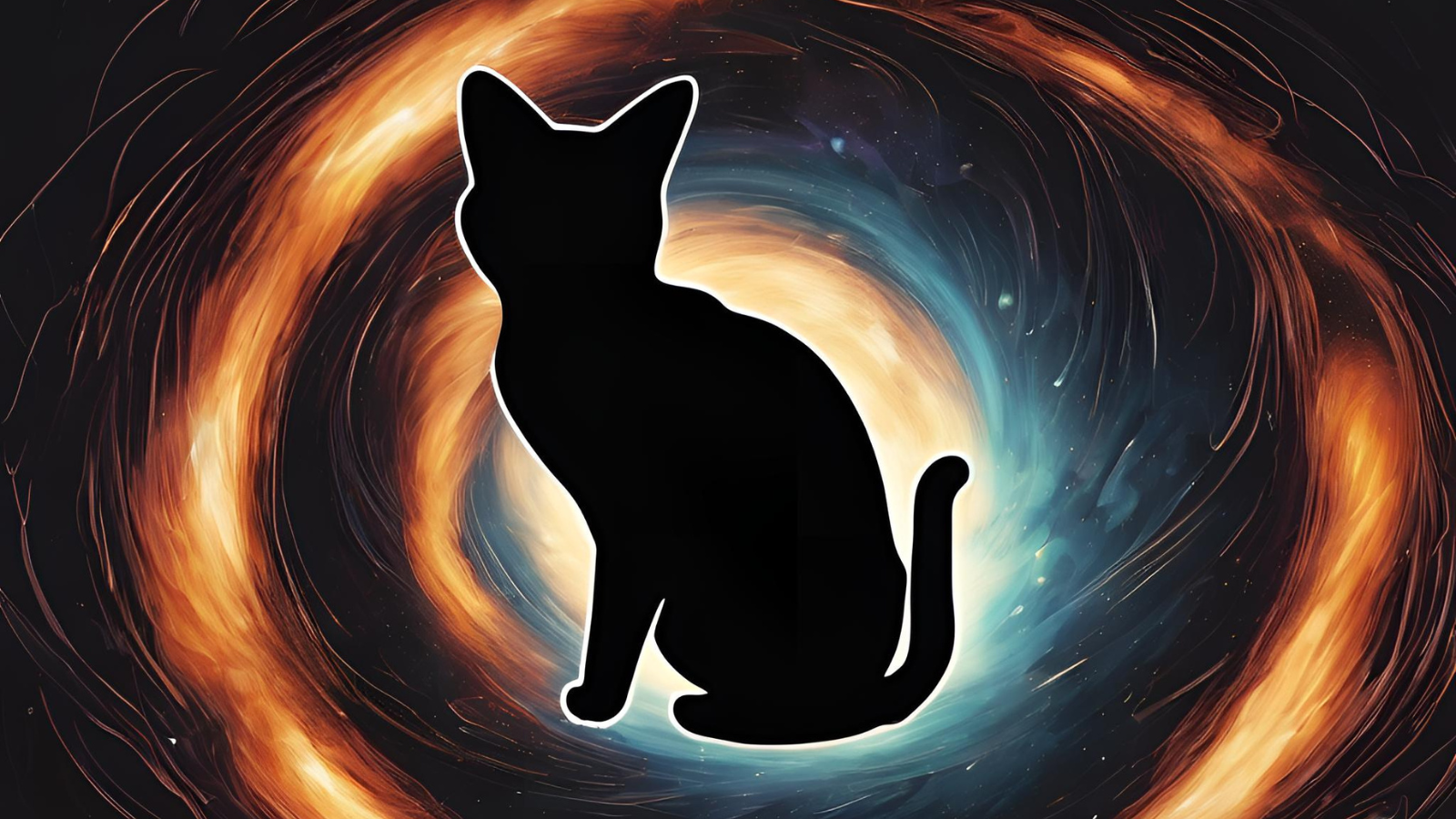
Scientists have suggested that tiny primordial black holes with the power to hollow out planets could be passing through everyday materials here on earth — rocks, glass, metal, and maybe even you or your cat.
These minuscule black holes created during the Big Bang have thus far remained hypothetical by evading detection. Now, two University at Buffalo scientists are urging researchers to expand their horizons in this hunt.
"We have to think outside of the box because what has been done to find primordial black holes previously hasn't worked," research co-author Dejan Stojkovic said in a statement."The chances of finding these signatures are small, but searching for them would not require much resources, and the potential payoff, the first evidence of a primordial black hole, would be immense!"
This search is vital because primordial black holes are one of the leading suspects for dark matter, the mysterious and invisible form of matter that accounts for around 85% of the stuff in the cosmos.
Stojkovic and colleagues have suggested that the hunt for primordial black holes should range from the very large to the very small. They theorize that a primordial black hole trapped inside a large rocky object out in the cosmos, like a planet, would devour its core, hollowing it out.
However, a tiny black hole moving at rapid speeds would bore a tiny, microscopic "tunnel" through solid materials, including everyday stuff here on Earth.
But don't worry about a primordial black hole shooting through your cat, or you, for that matter. The team behind these findings says such an event would be non-lethal!
Let's not start by searching cats
While the mention of "black holes" may immediately conjure impressions of a huge and powerful region of space from which not even light can escape, these spacetime events come in a range of masses and sizes.
At the largest end, supermassive black holes are cosmic titans at the heart of galaxies, with masses equivalent to millions or even billions of suns. They form from chains of mergers of progressively larger black holes.
Smaller stellar-mass black holes are born when massive stars reach the end of their lives and undergo a complete gravitational collapse. They have masses up to around 100 times that of the sun.
Primordial black holes are very different. It has been proposed that they have masses ranging from that of a planet to that of the average asteroid or a large mountain here on Earth.
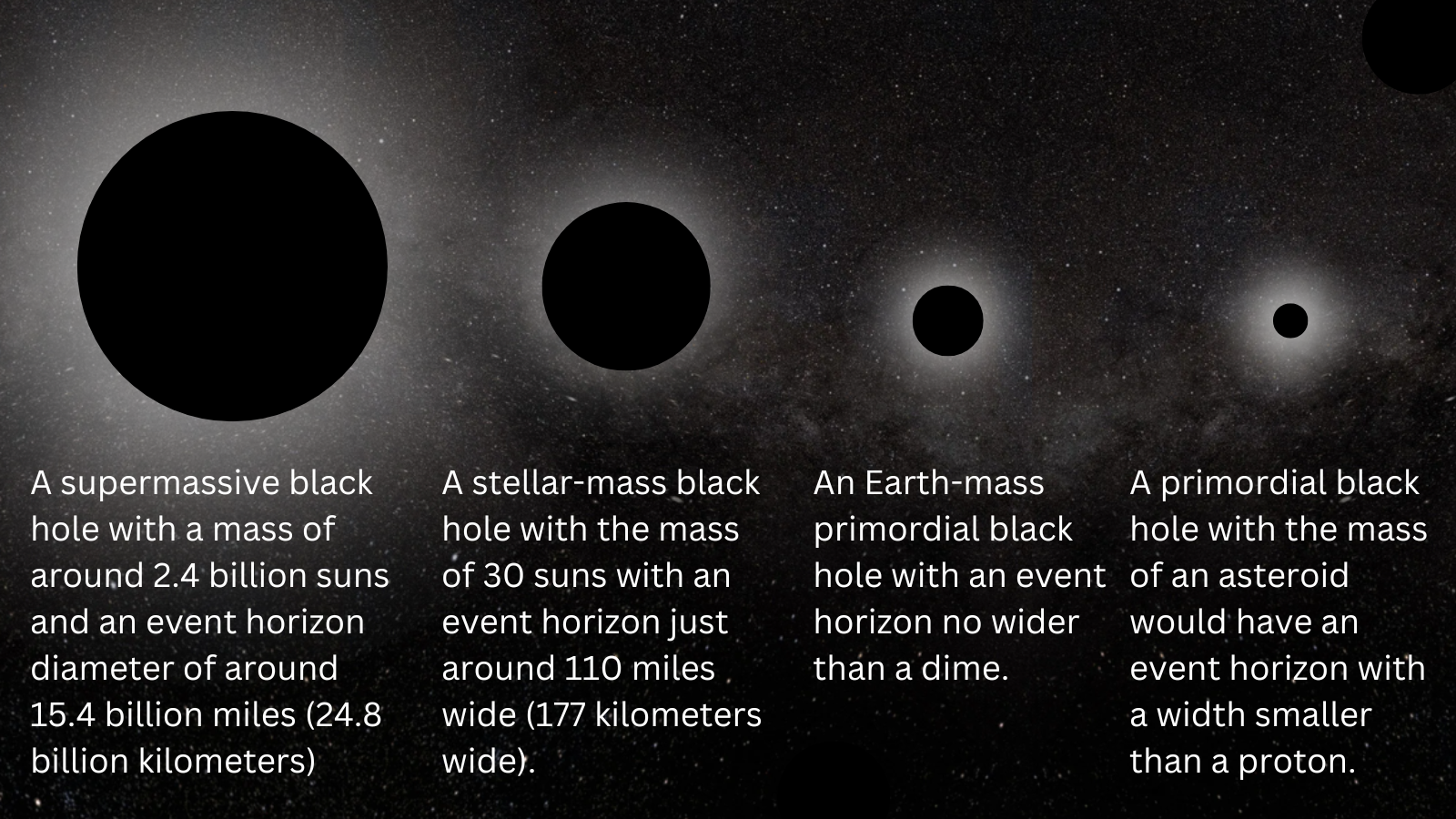
Like all black holes, the outer boundary of a primordial black hole is defined by its "event horizon," the point at which the black hole's gravitational pull becomes inevitable.
The more mass a black hole has, the wider its event horizon is. So, a supermassive black hole with a mass of 2.4 billion suns is around 15.4 billion miles (24.8 billion km) wide, while a stellar-mass black hole with a mass of around 30 suns would be around 110 miles (177 km) wide. A primordial black hole with the mass of an asteroid, on the other hand, would be smaller than the width of a proton, the particle that sits at the heart of atoms.
The formation of primordial black holes is also very different than the formation mechanisms of the previously mentioned "astrophysical" black holes. Rather than forming from stars, scientists propose that these tiny black holes would have formed from minuscule variations in the density of energy and matter in the cosmos 13.8 billion years ago.
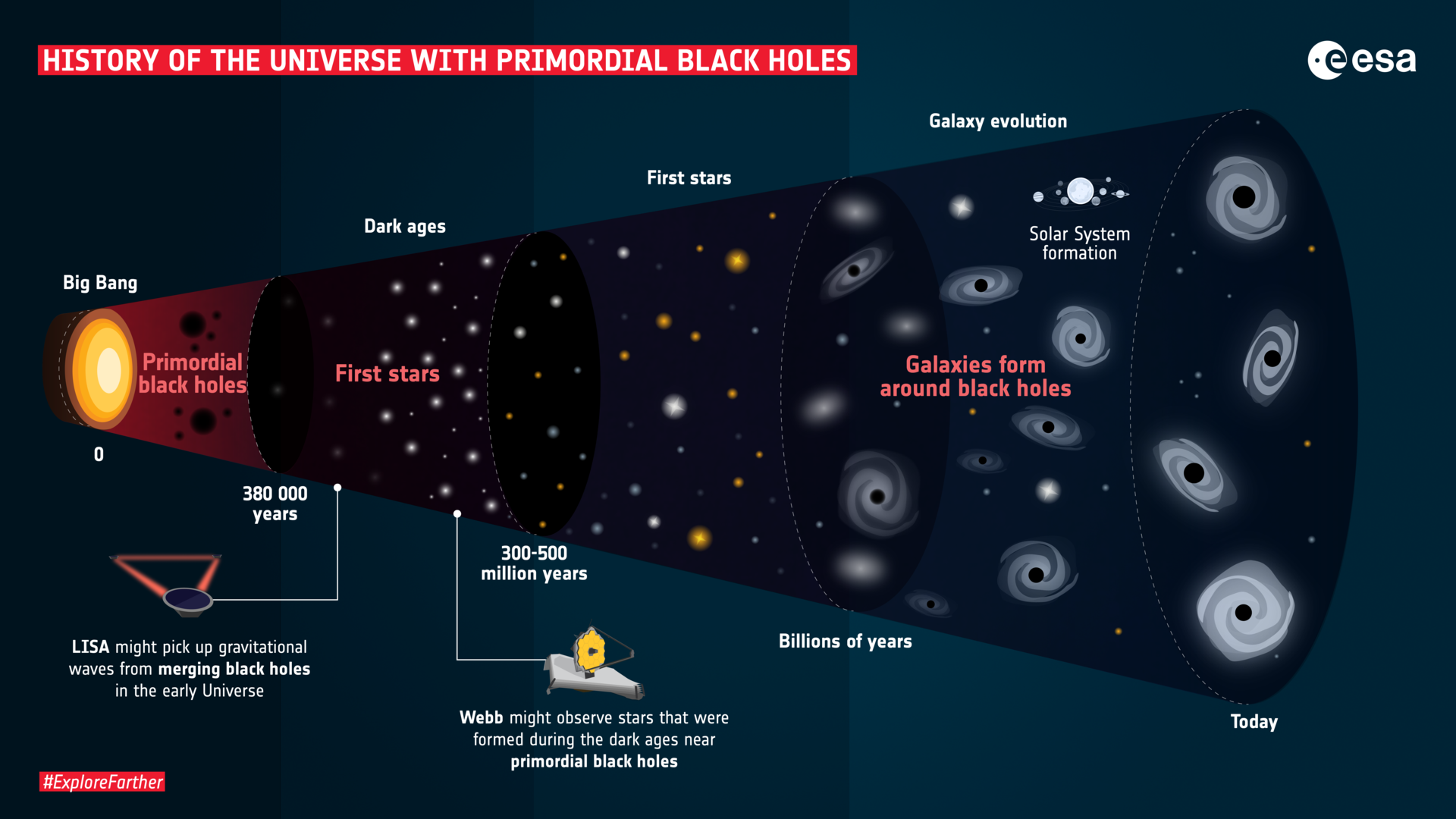
Stojkovic began theorizing about primordial black holes when wondering if they could become trapped within a planet, moon, or asteroid and what would happen if such a capture occurred.
"If the object has a liquid central core, then a captured primordial black hole can absorb the liquid core, whose density is higher than the density of the outer solid layer," Stojkovic said.
If the hollowed-out planet was then struck by another space rock, the primordial black hole could escape from within this empty planetary shell.
What would then happen to that shell depends on the composition of the planet and its size. Stojkovic and his co-author, De-Chang Dai of National Dong Hwa University, found that a planet calculated that such a hollow object could be no more than one-tenth the width of Earth could survive as a hollow shell.
"If it is any bigger than that, it's going to collapse," Stojkovic said.
That means if scientists are searching for planets hollowed out by primordial black holes, then smaller minor planets are the best bet.
Such hollowed-out worlds could be detected using telescopes, and their masses could be determined using calculations of the object's orbit.
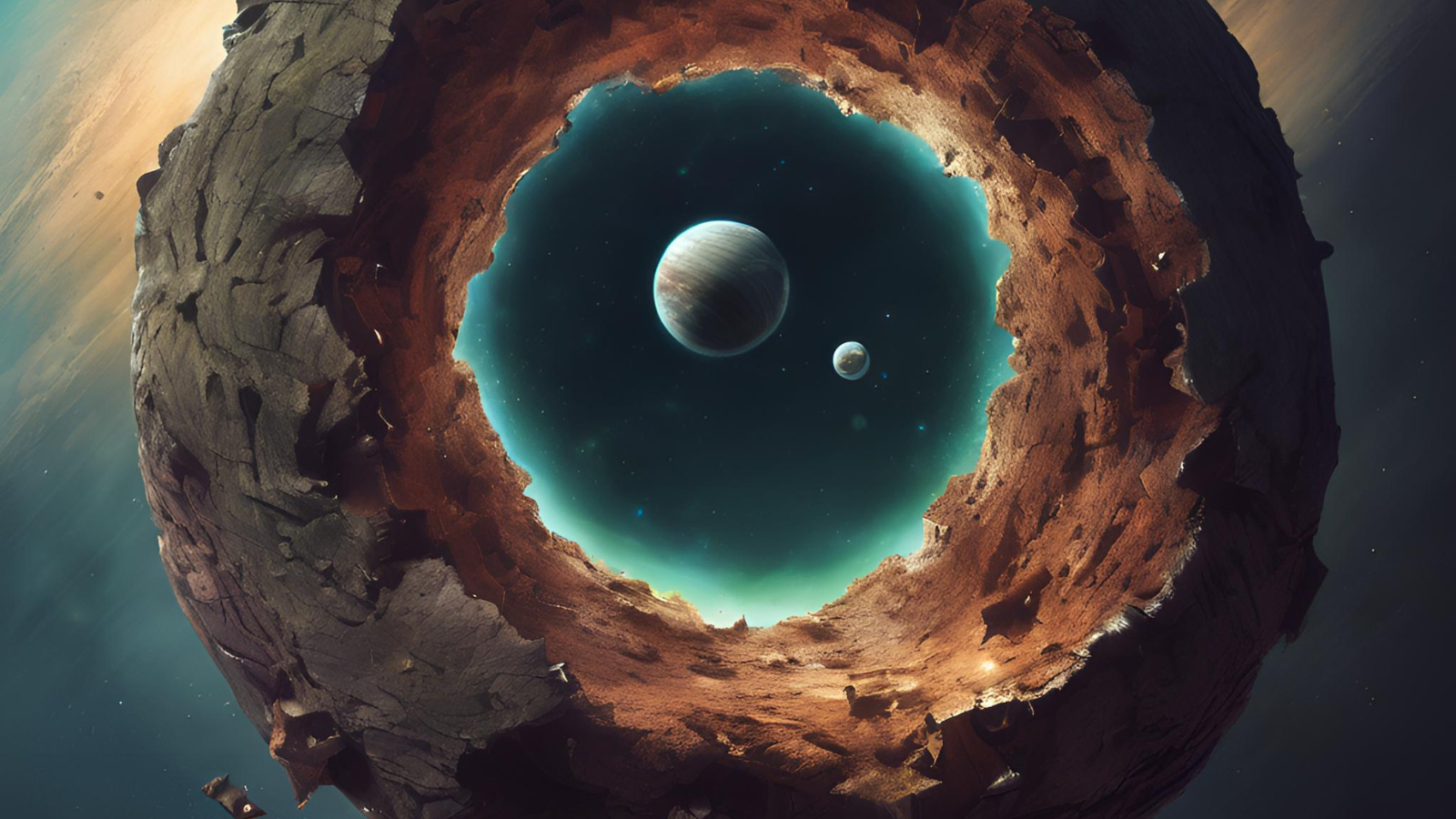
The situation is slightly different when a primordial black hole passes through an object without a liquid core.
The team suggests in this case, the primordial black hole would create a tiny tunnel. A primordial black hole with a mass of 1022 grams would bore a hole just 0.1 microns thick. For context, a human hair is about 70 microns thick.
While it would be impossible to detect such a hole in a distant planet, a thick slab of metal or another dense material on Earth could serve as an effective primordial black hole passage detector.
The team found that the chances of a primordial balck hole passing through an object on Earth are vanishingly small. That means the most likely way of detecting such a passage would be by examining rocks that have existed for billions of years.
Even then, the chance of a tiny Big Bang-originated black hole having passed through such an ancient object is still just 0.000001!
To Stojkovic, attempting to detect such a passage is still worthwhile as there is little risk to the endeavor.
"You have to look at the cost versus the benefit. Does it cost much to do this?" he said. "No, it doesn’t."
What to do if you or your cat are hit by a black hole
OK, while we are on the subject of risk, let's mention what the risk is to you (or you cat) if you are struck by a primordial black hole.
Firstly, the likelihood of this happening in your lifetime or in the lifetime of your cat is incredibly small.
But, if it did happen, the surface tension of your body and that of your cat is much smaller than that of a planet or a hunk of prehistoric rock. That means a primordial black hole would not rip you apart (phew!)
Though the primordial black hole would carry a large amount of kinetic energy, it would also be traveling at monumental speeds. That means it would not have the chance to transfer much of this energy as it passes through you.
"If a projectile is moving through a medium faster than the speed of sound, the medium’s molecular structure doesn't have time to respond," Stojkovic explained. "Throw a rock through a window; it's likely going to shatter. Shoot a window with a gun; it’s likely to just leave a hole."
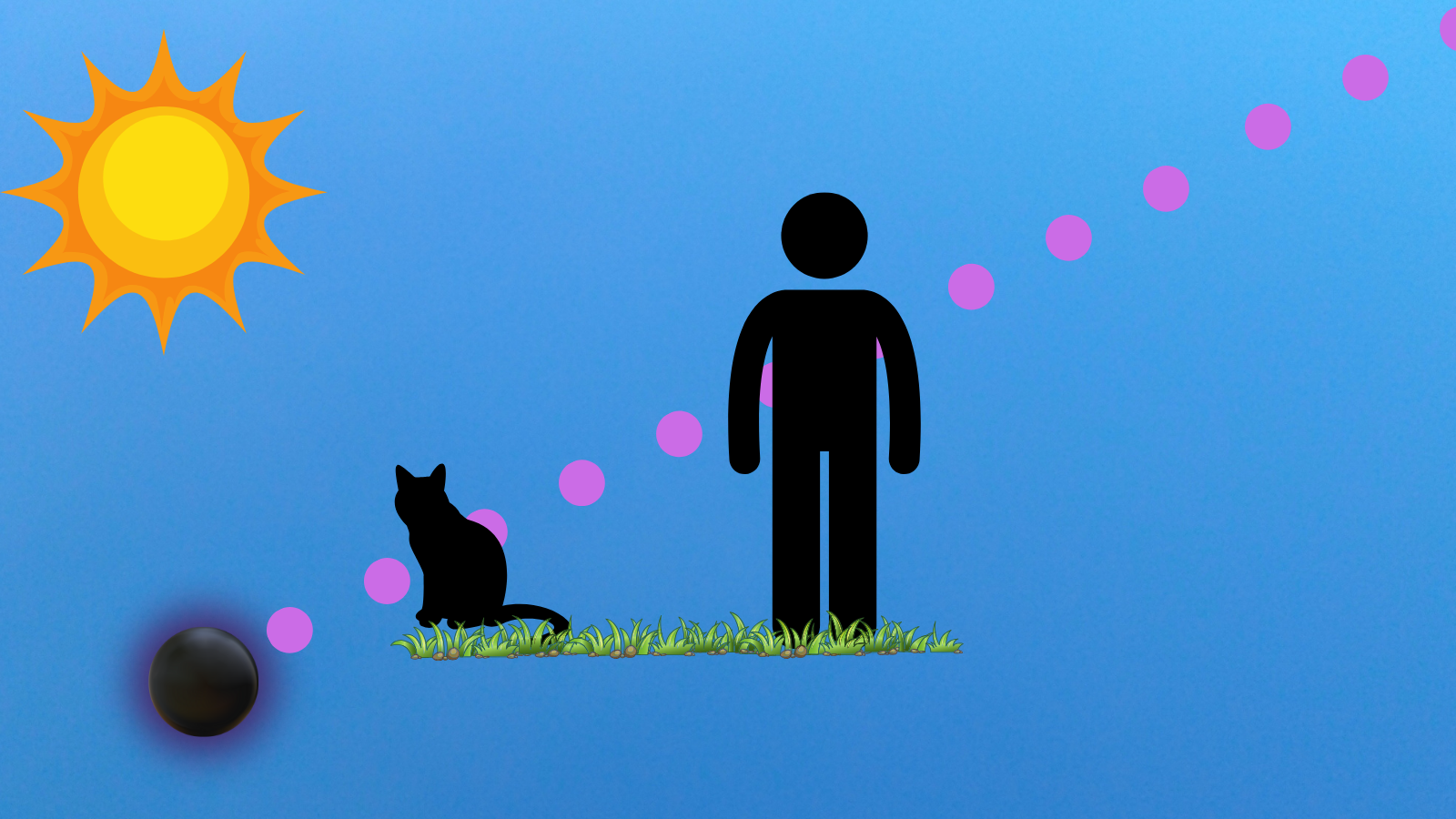
If the idea of being blasted at high speed by a primordial black hole and feeling nothing seems unlikely to you, consider this:
As you were reading that sentence, hundreds of trillions of neutrons passed through your body at near the speed of light, and you didn't feel a thing. These particles are nicknamed "ghost particles" for good reason. Maybe we could rename primordial black holes "ghost black holes" if Stojkovic is proven correct.
While all this may seem very speculative, Stojkovic believes that theoretical studies like this are vital and have seen many concepts once considered improbable becoming accepted elements of science.
He thinks that this kind of unconventional thinking could help tackle problems in physics that have lingered for decades, particularly the nature of dark matter.
"The smartest people on the planet have been working on these problems for 80 years and have not solved them yet," Stojkovic concluded. "We don’t need a straightforward extension of the existing models. We probably need a completely new framework altogether."
Stojkovic's research is published in the journal Physics of the Dark Universe.







